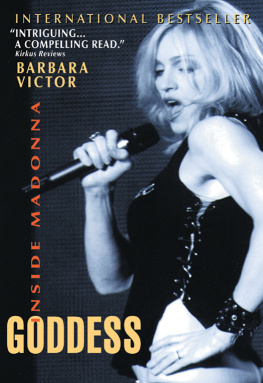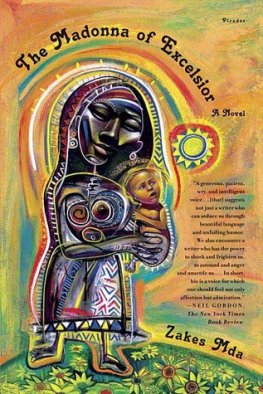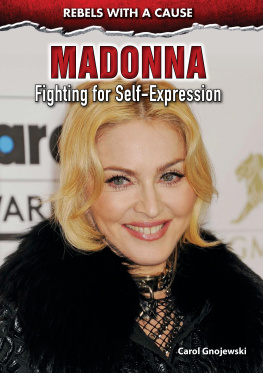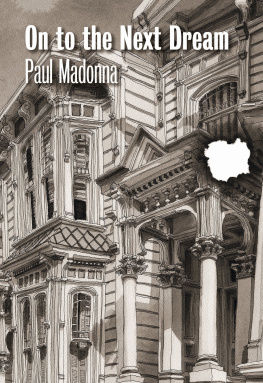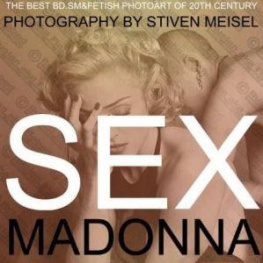
For Grard
contents
PART ONE
Dont Cry for me Argentina
PART TWO
Whos That Girl?
PART THREE
Lucky Star
PART FOUR
Material Girl
PART FIVE
Blond Ambition
Despite all the adverse reaction to her presence in Buenos Aires, Madonna felt comfortable. On one occasion, a journalist from a local newspaper was allowed to watch one of her tango lessons. After it was over, the reporter approached her.
Do you get the impression that this is a macho society? the journalist asked.
Like a true ambassador of good will, Madonna answered without hesitating. Women of Argentina are treated well because Eva Peron was the champion of womens rights, and thats something I can relate to.
Eva Peron is often called a whore and an opportunist, the journalist challenged the star.
Either she was called a saint or a prostitute, Madonna replied, which is what I am called by everyone, because of my name and because Im in touch with my own sexuality. Its the obvious way to put a woman down, to call her a whore and imply that she has no morals and no integrity and no talent. And God knows, I can relate to that, too.
Days later, when asked his impressions of Madonna, the journalist thought for a moment before saying, She is fascinating because she is so self-involved. Everything is me or I or whatever she can relate to based on her own life. In mind and soul, she embodies Eva Peron!
part one
Dont Cry for Me Argentina
O n October 13, 1995, Madonna landed at Heathrow Airport aboard a late-night Concorde under an assumed name. She was in London to begin working on the most crucial phase of production for the film Evita, a role that would prove to be her greatest screen success and one which she had coveted for more than ten years.
Dressed in black with dark glasses covering her face, she walked hurriedly toward passport control. No advance publicity had signaled her arrival at Heathrow, and therefore no screaming public or photographers flashing lights greeted her. Only one lonely fan with a throwaway Kodak camera waited politely at the baggage-claim area. Madonna allowed him to snap several shots before she continued briskly on her way.
Alan Parker, the director of Evita and most famous for his movie Fame, had summoned Madonna and her two leading men, Antonio Banderas, who was to play Che, and Jonathan Pryce, the British stage actor who would portray Juan Pern, to London to record the score for the film. The idea was that the three principal members of the cast would spend approximately four months recording different versions of the thirty-one songs, ranging from loud and dramatic to smaller and more restrained, before a single reel of film was shot. When they were finished, Parker would choose the rendition he liked best, and the one he would visualize when he was actually filming the corresponding scenes. It was an enormous challenge for Madonna since Evita, more than mere musical theater, was operatic in sound and style. She knew it would be the first time she would sing without benefit of extravagant sets, costumes, and seductive dance steps that detracted from the thin quality of her voice. In 1995, instead of embarking on a tour to promote her album Bedtime Stories, she studied voice with Joan Leder, one of the best coaches in the industry, for six months before production actually began. The end result was that Madonna not only mastered the complicated musical written by Andrew Lloyd Webber and Tim Rice, but also developed an upper register that she never knew she possessed. In fact, during the six months that she trained with Leder, Madonna wrote two songs, One More Chance and Youll See, for her Something to Remember album. She was now utilizing techniques that she had learned during her voice lessons. While Alan Parker had complete confidence in his star, Andrew Lloyd Webber wondered if she would be willing to forget her star status and work to improve her voice. In her defense, Alan Parker said, She was determined to sing it as Andrew had scored it. I was sure that she was going to knock peoples socks off. In the end, I was right because she was quite incredible.
Curiously, Joan Leder found Madonna to be surprisingly shy. I work clients back-to-back, Leder explained, and Madonna always felt that Patti LuPone, who had done the role on Broadway, or Roberta Flack, another one of my clients, always had their ear to the door.
Training her voice was not the only challenge Madonna faced when she arrived in London to record. Parker also expected her to grasp the emotions that went along with each song and conjure them up at will. On more than one occasion in the West End recording studios, she would dim the lights and burn candles to create an ethereal atmosphere in order to feel Evitas pain, frustration, or joy. In the end, she exceeded even her own expectations, although she considered the whole experience humbling. It was no secret that from the very beginning, either Patti LuPone or Elaine Paige had been Webber and Rices first choice to portray Eva Pern.
If Madonna succeeded in mastering the part, Alan Parker also achieved as difficult an accomplishment when, on December 24, 1995, he finally closed the deal to bring Evita to the screen. Optioned by such international directors as Ken Russell, Franco Zeffirelli, Herb Ross, Richard Attenborough, Alan Pakula, Hector Babenco, Francis Ford Coppola, and Oliver Stone, Evita had lingered in development hell for more than fifteen years. Despite their different styles and visions of how they would film Evita, they had all considered Madonna the obvious choice to play the second-rate Argentine actress who had risen from obscurity and poverty to become an international political icon. They had not been able to convince the studios and producers to accept Madonnas demands concerning salary as well as her suggestions that the composer and lyricist write additional songs for her. Another problem they shared was their inability to secure permission from the Argentine government to film the movie on location in Buenos Aires. From the beginning of every negotiation, it had always been a question of money. The government of Argentina expected to be paid by the movie studio for their cooperation in blocking off streets and allowing unlimited access to the various buildings and monuments throughout the city. In each case, the demands of the government were considered unreasonable by the producers and studios.
Alan Parker had the most recognizable directorial style when it came to musicals, partly because of his experience with Fame and partly because he had begun his career making television commercials set to music. By the time he was at the helm, Andrew Lloyd Webber and Tim Rice considered Madonna to be a bad box-office risk. With the exception of her first screen venture in 1985 in Desperately Seeking Susan, she had had a string of bad films to her credit, including Shanghai Surprise, Whos That Girl, and probably the most embarrassing of all with a cringe factor off the charts, Body of Evidence. Typical of Madonna, who always wants the man who rejects her or that deal that eludes her, when she heard that the role was slipping out of her grasp, she became even more determined to play the former first lady of Argentina. In a desperate attempt to secure the role, she wrote Parker a letter and sent it along with her video Take a Bow, which she claimed had been inspired by Eva Pern and the way she dressed. The video, made in 1995, was filmed in sepia and filled with scenes of Latin iconography; a finger pierced by a needle, a drop of blood falling into a drink. Madonna is in the stands watching a bullfight. Wearing a 1940s outfit with a veil covering her face, she compares the process of dressing herself to the toreador being fitted into his tight brocade jacket and satin pants to appear in the ring. The clip cuts from Madonna in the stands to Madonna in bed, wearing only sexy underwear, and writhing in what appears to be a masturbatory frenzy.
Next page
